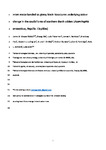From matte banded to glossy black: Structures underlying colour change in the caudal lures of southern death adders (Acanthophis antarcticus, Reptilia: Elapidae)
| dc.contributor.author | Crowe-Riddell, J | |
| dc.contributor.author | Dix, S | |
| dc.contributor.author | Pieterman, L | |
| dc.contributor.author | Nankivell, J | |
| dc.contributor.author | F. Simões, Bruno | |
| dc.contributor.author | Ford, M | |
| dc.contributor.author | Ludington, A | |
| dc.contributor.author | Dunstan, N | |
| dc.contributor.author | Partridge, J | |
| dc.contributor.author | Sanders, K | |
| dc.contributor.author | Allen, L | |
| dc.date.accessioned | 2021-02-01T14:13:11Z | |
| dc.date.issued | 2021-01-30 | |
| dc.identifier.issn | 0024-4066 | |
| dc.identifier.issn | 1095-8312 | |
| dc.identifier.uri | http://hdl.handle.net/10026.1/16834 | |
| dc.description.abstract |
<jats:title>Abstract</jats:title> <jats:p>Many ambush-foraging snakes move their tails to entice prey within striking range (‘caudal luring’). During ontogeny, the conspicuous hues of caudal lures change to match the cryptic patterning of the body/head. This coincides with decreased luring behaviour and reflects the trade-off between prey acquisition and camouflage as the snake grows. Australo-Papuan death adders (Acanthophis, Elapidae) are unique in that both juveniles and adults use caudal luring, but ontogenetic colour change has not been investigated. We examined the spectral reflectance, microstructure and pigmentation of caudal skin in wild-sourced and captive bred Acanthophis antarcticus ranging in body size (snout-vent length 116–674 mm; mass 3–832 g; N = 33) to test whether colour properties change as snakes grow. We found that lure colour is distinct from the cryptic body skin across the life history, and changes from a matte banding pattern (grey/black) in neonates/juveniles, to uniform and glossy black with a yellow ventral stripe in larger snakes. These colour changes are caused by increases in dermal pigmentation and a transition to a smooth, interlocking epidermal microstructure. To understand the selection pressures that might be driving ontogenetic colour change in this species, further studies should test how different prey types respond to distinct lure morphologies.</jats:p> | |
| dc.format.extent | 666-675 | |
| dc.language | en | |
| dc.language.iso | en | |
| dc.publisher | Oxford University Press (OUP) | |
| dc.subject | caudal luring | |
| dc.subject | glossiness | |
| dc.subject | microstructure | |
| dc.subject | ontogenetic colour change | |
| dc.subject | reflectance | |
| dc.subject | structural colour | |
| dc.title | From matte banded to glossy black: Structures underlying colour change in the caudal lures of southern death adders (Acanthophis antarcticus, Reptilia: Elapidae) | |
| dc.type | journal-article | |
| dc.type | Journal Article | |
| plymouth.author-url | https://www.webofscience.com/api/gateway?GWVersion=2&SrcApp=PARTNER_APP&SrcAuth=LinksAMR&KeyUT=WOS:000637014100013&DestLinkType=FullRecord&DestApp=ALL_WOS&UsrCustomerID=11bb513d99f797142bcfeffcc58ea008 | |
| plymouth.issue | 3 | |
| plymouth.volume | 132 | |
| plymouth.publication-status | Published | |
| plymouth.journal | Biological Journal of the Linnean Society | |
| dc.identifier.doi | 10.1093/biolinnean/blaa218 | |
| plymouth.organisational-group | /Plymouth | |
| plymouth.organisational-group | /Plymouth/Faculty of Science and Engineering | |
| plymouth.organisational-group | /Plymouth/Faculty of Science and Engineering/School of Biological and Marine Sciences | |
| plymouth.organisational-group | /Plymouth/REF 2021 Researchers by UoA | |
| plymouth.organisational-group | /Plymouth/REF 2021 Researchers by UoA/UoA06 Agriculture, Veterinary and Food Science | |
| plymouth.organisational-group | /Plymouth/REF 2021 Researchers by UoA/UoA06 Agriculture, Veterinary and Food Science/UoA06 Agriculture, Veterinary and Food Science MANUAL | |
| plymouth.organisational-group | /Plymouth/Users by role | |
| plymouth.organisational-group | /Plymouth/Users by role/Academics | |
| dcterms.dateAccepted | 2020-11-24 | |
| dc.rights.embargodate | 2022-1-30 | |
| dc.identifier.eissn | 1095-8312 | |
| dc.rights.embargoperiod | Not known | |
| rioxxterms.versionofrecord | 10.1093/biolinnean/blaa218 | |
| rioxxterms.licenseref.uri | http://www.rioxx.net/licenses/all-rights-reserved | |
| rioxxterms.licenseref.startdate | 2021-01-30 | |
| rioxxterms.type | Journal Article/Review |


